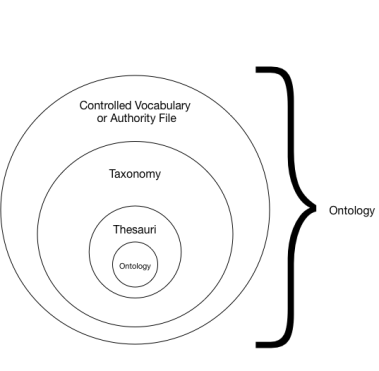In their seminal book Information Architecture for the Web and Beyond, Morville, Rosenfeld, and Arango explain that Information Architecture (IA) is comprised of three elements: Users, Content, and Context, reflected in this diagram from Arango’s blog.
Whether you are planning a new website with new content or reworking an existing website with a boatload of existing content, the project should be framed by business goals. Users, content, and context lie within the frame of the business.
Donna Spencer‘s book, A Practical Guide to Information Architecture, breaks the Information Architecture process into four main parts. If we include an element for business goals at the beginning of her list, a five step process emerges:
- Understand the Business Context
- Understand Users and their Context
- Understand the Content
- Design the IA
- Design the Navigation
Information Architecture Process Step-by-Step
These steps are presented in a linear process. Information Architecture projects are not always linear and you may not be responsible for all the project pieces. The questions or statements under each section are useful, whether you are responsible for the entire process or a single section.
1. Understand the Business Context
Meet with stakeholders to reveal business goals. Ask lots of questions, conduct individual and group interviews and ensure all stakeholders are heard.
- What is the Business Model?
- What is the Value Proposition?
- Who is the customer?
- What is the business need for this Information Architecture project?
- How will success be measured?
If you have a team working on this project, post stakeholder answers and comments in a public place to reference during the project.
2. Understand Users and their Context
Observe users and conduct interviews to reveal user needs, goals, and behaviors.
- Why do they look for info?
- Where do they look for info?
- How do they look for info?
- How do they categorize info?
Share results of user research with your team and with stakeholders. If the business does not yet have a primary persona, create one from your user research.
Communicating insights gained from user research and revealing user goals, needs, and behaviors may challenge the assumptions of the stakeholders and potentially shift the business goals of the project. Stay flexible and be ready to pivot on the project.
3. Understand the Content based on User Needs
- What content is already present?
- What content should be repurposed, reworked, or removed?
- What content does not yet exist but is needed?
Communicate content research activities to stakeholders and your team. Sometimes people have personal feelings attached to pieces of content. Lack of communication about reworking or removing content may cause hurt feelings and could lead to project impediments.
4. Design the IA and Test
- Explore IA patterns already present in similar projects
- Plan carefully for the labels and language that will be used
- Test the IA with users by card sorting and tree testing
- Revise the IA
Communicate designs, testing, and changes to stakeholders and your team.
5. Design the Navigation
- Plan and design the navigation
- Test the navigation
- Revise the navigation
Design the navigation after the IA? Yes—IA is the big picture and navigation is wayfinding. Navigation helps users move through the Information Architecture to accomplish goals.
For a successful Information Architecture, follow or adapt a process that includes regular tests with users and meaningful communication with stakeholders at every step in the process.











You must be logged in to post a comment.